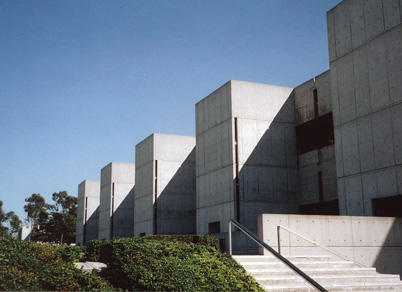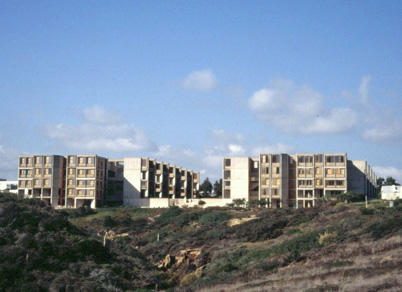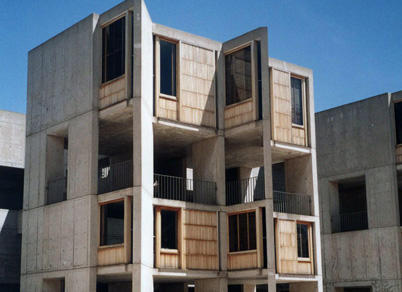Salk Institute
2008 World Monuments Watch
Located on a bluff overlooking the Pacific Ocean in southern California, the Salk Institute for Biological Studies is considered one of Louis Kahn's greatest buildings and an icon of 20th-century architecture. Jonas Salk, discoverer of the polio vaccine, engaged Kahn to design a building that would provide laboratory and office space for ten research scientists on a site in La Jolla, California. Inspired by the natural plateaus and contours of the Torrey Pines mesa, Kahn developed a master plan for the complex that consisted of a meeting hall by the sea, laboratories, and residences. Only the laboratories-two identical, six-story structures separated by a courtyard-were constructed. Although the Salk Institute is recognized for the functionality and quality of its laboratories, it is the courtyard that distinguishes the building as a masterpiece of modern architecture. Designed in collaboration with celebrated Mexican architect Luis Barragán, the simple, stone-paved courtyard contains a small pool at its eastern edge that feeds into a narrow, linear channel symmetrically dividing it. The Institute has been designated a landmark by the City of San Diego and is included on the California State Register of Historic Places. It has been deemed eligible for, but has not yet been placed on, the U.S. National Register of Historic Places. The complex was placed on the 2008 Watch list because the Salk Institute for Biological Studies proposed a new master plan. Submitted to the City of San Diego in 2004, the plan calls for the addition of some 23,000 square meters of above-ground administrative and support space and an unspecified amount of below-ground construction. The placement of the proposed development would partially obscure and thereby destroy the iconic view of the Pacific Ocean from the courtyard, recognized as the most significant feature of this landmark property.



